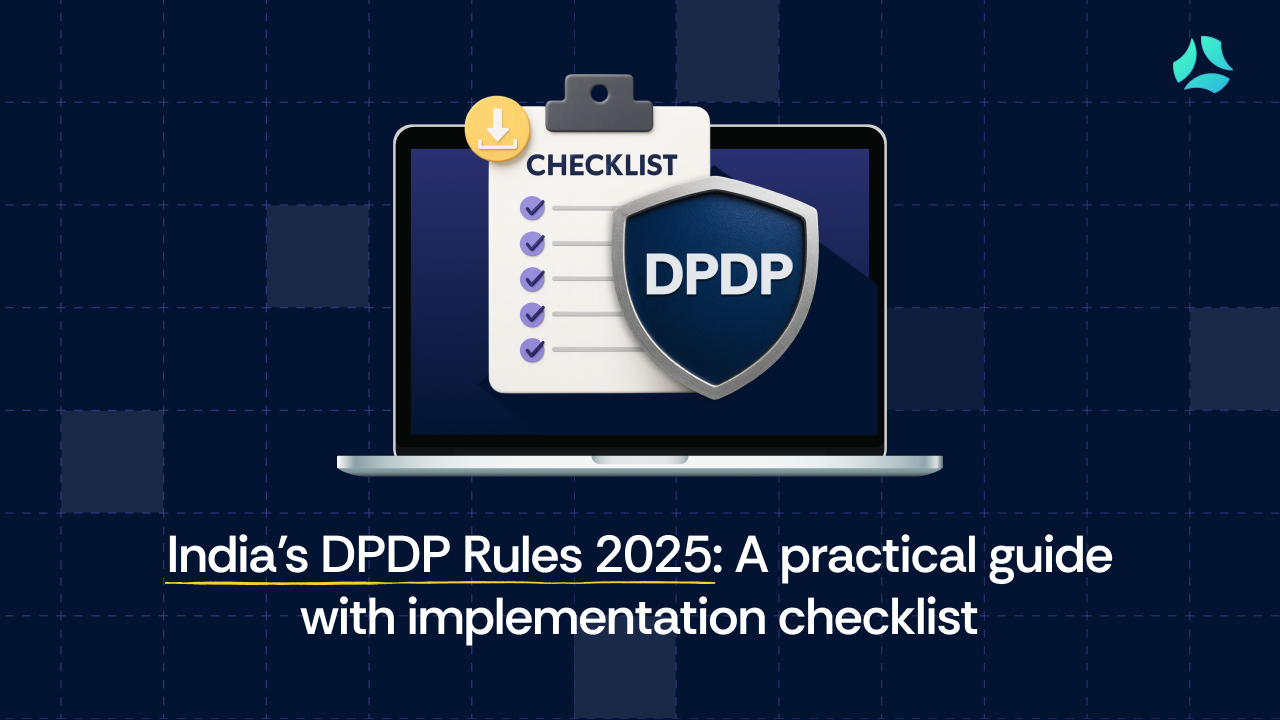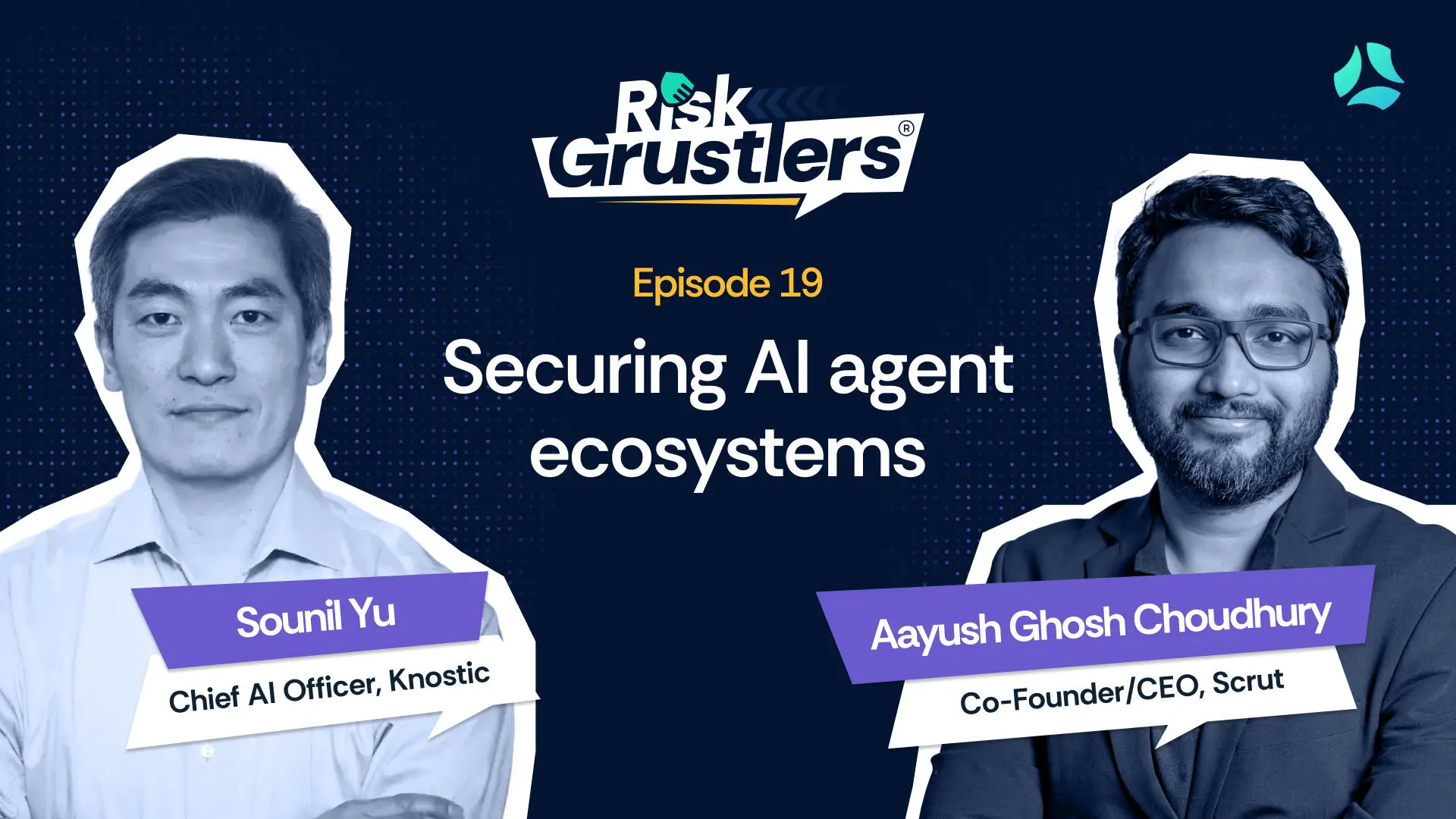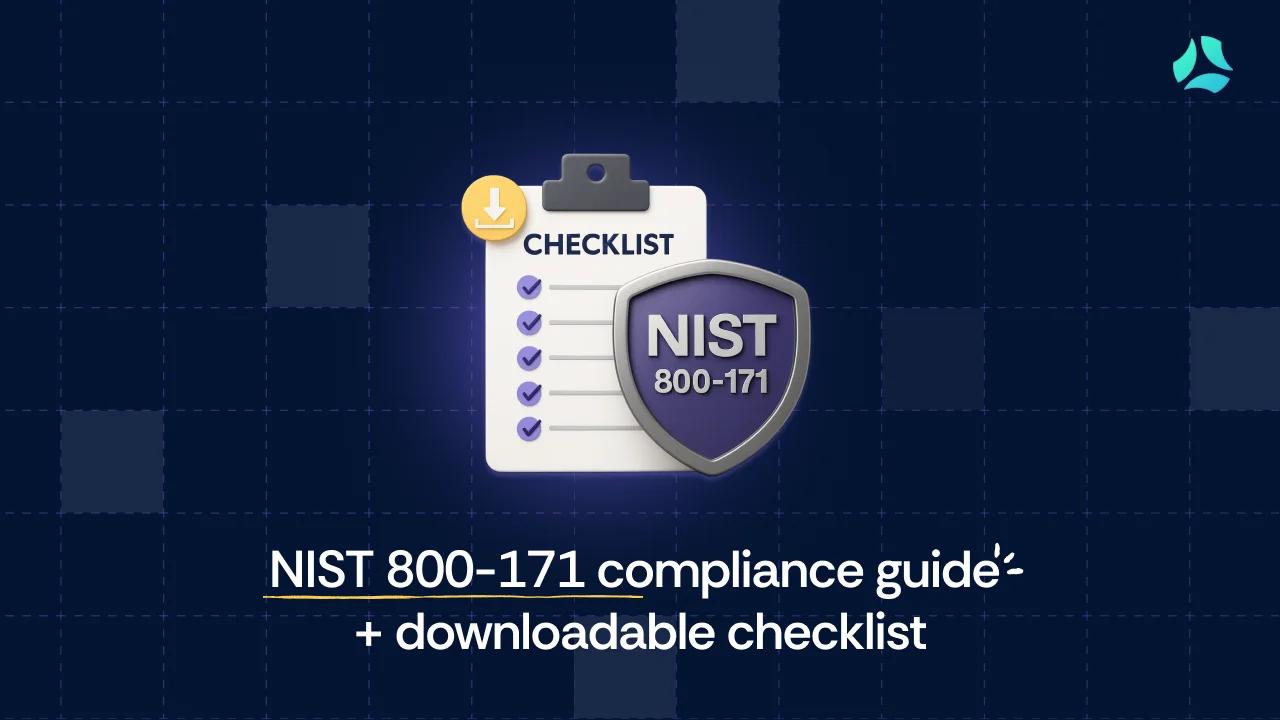ISO 27001 Change Management: Key Practices & Tips
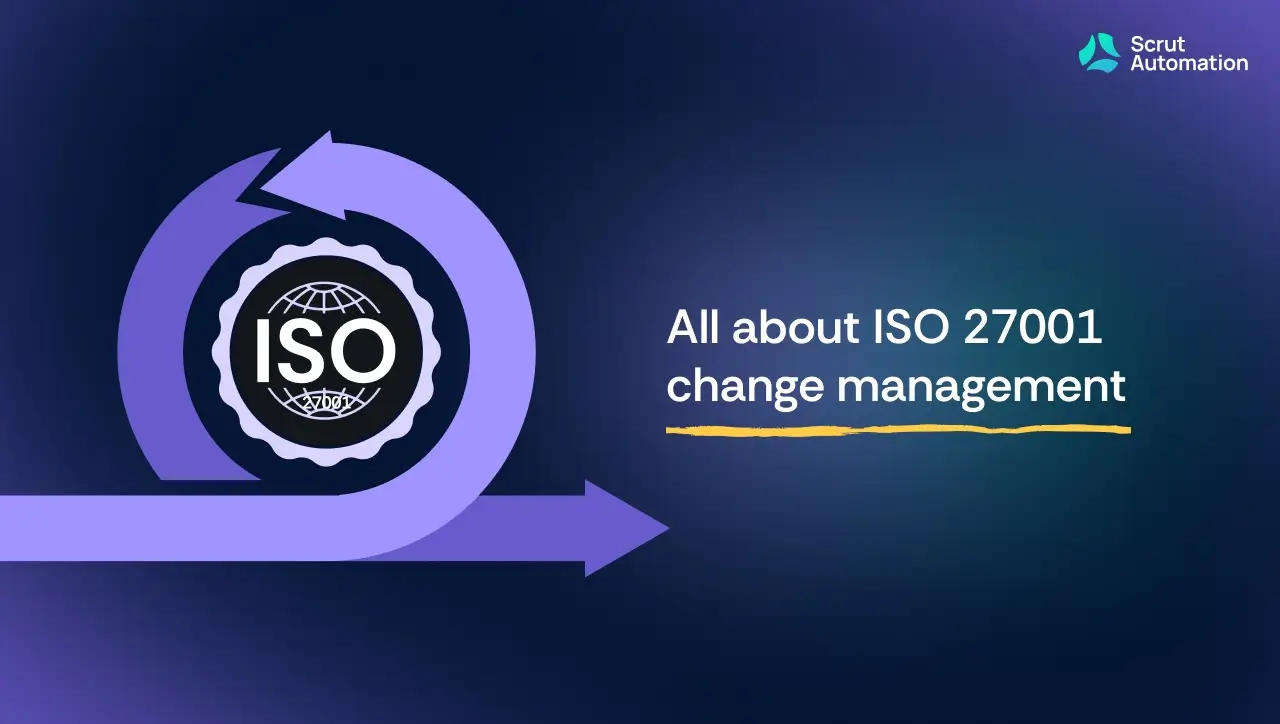
Implementing change without compromising security is easier said than done. Whether it’s a software update, a configuration tweak, or an infrastructure overhaul, every change can introduce risk if not properly managed.
That’s why ISO 27001:2022 introduced Control 8.32, dedicated to change management. It requires organizations to establish formal processes to ensure changes are assessed, approved, and implemented without jeopardizing the confidentiality, integrity, or availability of information.
In this blog, we break down what ISO 27001 says about change management, how to implement it, and what good change control looks like in practice.
What is change management?
Change management is the process of systematically handling modifications to systems, processes, or assets to minimize disruption and risk. It ensures that any change—whether planned or emergency—is evaluated, approved, implemented, and reviewed in a controlled manner.
Within ISO 27001, change management plays a critical role in maintaining the security and integrity of an organization’s information systems. This includes both technical changes (such as system upgrades, configuration updates, or new software deployments) and non-technical changes (like policy updates, process redesigns, or shifts in roles and responsibilities).
By embedding change control into the broader information security management system (ISMS), organizations can ensure that all changes—regardless of type—don’t compromise compliance or introduce new vulnerabilities.
Why is change management important?
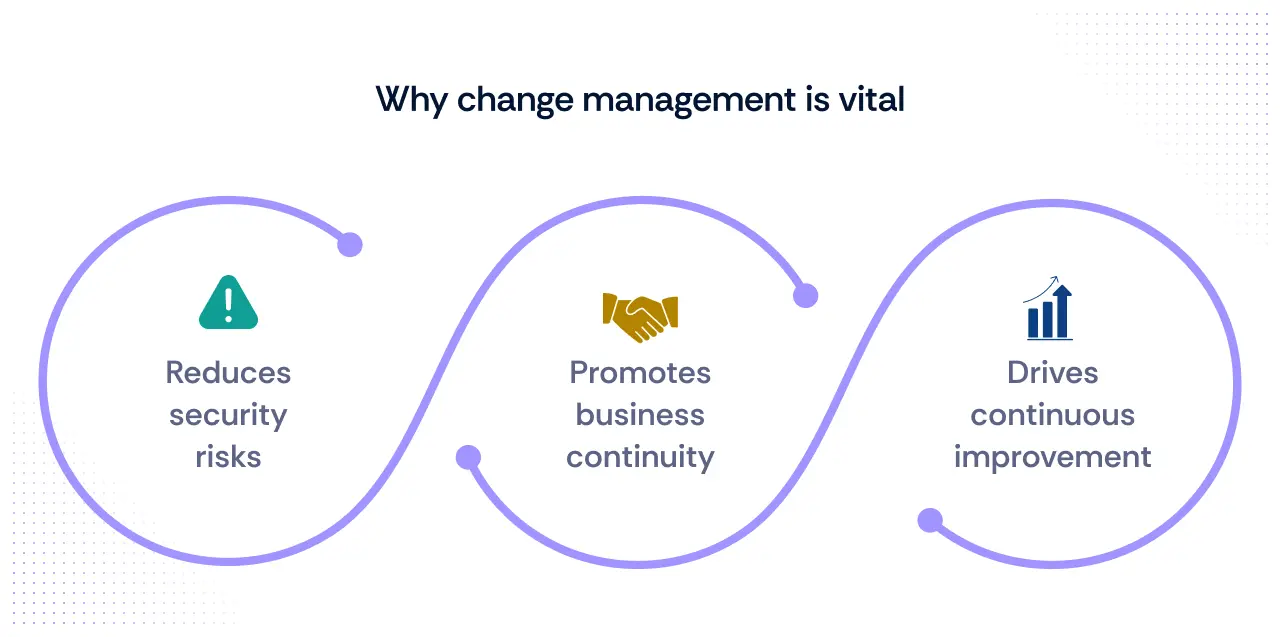
Change isn’t just an operational concern; it’s a security one. Without the right controls, even minor system updates can introduce significant risk. ISO 27001 emphasizes change management because it plays a key role in maintaining a secure, compliant, and resilient environment.
It also closely ties into other Annex A controls, such as 5.31 (security in development and support processes) and 8.28 (secure configuration), creating a coordinated approach to managing change securely.
Here is why it’s important:
1. Reduces security risks
A structured change management process helps prevent the introduction of vulnerabilities, misconfigurations, or downtime. By assessing and approving changes before implementation, organizations minimize the chances of security incidents.
2. Supports compliance with ISO 27001
Change management is a clear expectation under ISO 27001:2022, with an explicit control (8.32) outlining the need for structured handling of changes. Maintaining proper documentation, approvals, and testing records is essential, not just for day-to-day operations but also for certification and audits.
While the 2022 update makes this requirement more visible, change management isn’t entirely new. It was previously embedded more implicitly under related controls in ISO 27001:2013, such as those on system acquisition, development, and maintenance. The 2022 version brings greater clarity and focus.
3. Maintains system integrity and availability
Unchecked changes can lead to system instability or service interruptions. With formal controls in place, organizations can ensure that every modification preserves the confidentiality, integrity, and availability of information sysems.
4. Promotes business continuity
Poorly managed changes are a common source of unexpected outages. Change management includes fallback planning and risk assessments to help keep essential services running, even if a change doesn’t go as expected.
5. Drives continuous improvement
Over time, change logs, post-implementation reviews, and audit trails offer valuable insights. These learnings help refine internal processes and strengthen the organization’s overall security posture.
6. Facilitates better risk management
Every change carries risk. By integrating change management into the broader risk management framework, organizations can proactively identify and address new threats introduced through change.
7. Improves cybersecurity resilience
As cyber threats evolve, staying secure means adapting fast—but safely. Change management enables timely implementation of patches, configuration updates, and new security controls without creating additional risk.
The 2017 Equifax breach—which stemmed from a missed patch—remains a cautionary tale of what happens when change isn’t managed effectively. A structured change process ensures that critical updates don’t fall through the cracks, helping organizations stay resilient in the face of emerging threats.
8. Builds stakeholder confidence
A consistent, well-documented approach to change shows regulators, customers, and partners that your organization takes security seriously. It’s a key part of earning and maintaining trust.
What is ISO 27001 change management policy?
An ISO 27001 change management policy is a formal document that outlines how changes to information systems and processes should be initiated, reviewed, approved, implemented, and documented to ensure security and compliance. It provides a consistent framework for managing change across the organization, helping reduce risk, avoid disruption, and demonstrate alignment with ISO 27001 requirements.
For organizations working toward certification—or maintaining it—a well-defined policy is essential for building operational discipline around secure change practices.
What are the key components of change management?
An effective change management process goes beyond just approving requests—it requires a structured approach that considers risk, documentation, communication, and operational readiness. ISO 27001:2022 Control 8.32 doesn’t prescribe a fixed checklist, but it does expect organizations to define and implement controls that ensure changes are secure, well-planned, and traceable. Below are the core components that make up a strong change management process.
1. Change initiation and categorization
Every change should begin with a formal request that captures the intent, scope, and urgency. Organizations should also classify changes—such as standard, normal, or emergency—based on their risk and frequency, which determines the required level of oversight.
2. Impact and risk assessment
Before implementation, each change must be assessed for its potential impact on information security, operations, compliance, and service availability. This assessment helps determine whether additional controls, rollback plans, or stakeholder consultations are necessary.
3. Authorization and approval
Changes must be reviewed and approved by appropriate personnel, such as system owners, team leads, or designated approvers. The approval step ensures accountability and confirms that the change meets internal risk thresholds.
4. Planning and scheduling
Approved changes should include a clear implementation plan, including who will make the change, when it will happen, how it will be tested, and how long it will take. Timing should consider business hours, peak periods, and dependencies on other systems or teams.
5. Testing and validation
Where feasible, changes should be tested in a controlled environment before being pushed to production. This helps catch issues early and ensures the change performs as intended without introducing new vulnerabilities.
6. Communication and stakeholder notification
Relevant stakeholders—such as affected teams, service owners, or customers—should be informed in advance of any significant changes. For high-impact changes, this may include scheduled downtime notifications or coordination across departments.
7. Back-out and contingency planning
Every change plan should include a rollback or contingency strategy in case the implementation fails or introduces unforeseen issues. These plans are critical for maintaining uptime and ensuring quick recovery.
8. Implementation and documentation
Once implemented, the change should be documented with details such as what was done, who executed it, and whether it was successful. Documentation ensures transparency and traceability, especially in audits or post-change reviews.
9. Post-implementation review
After a change is completed, teams should review the outcome to identify any issues, confirm objectives were met, and capture lessons learned. These insights feed into continuous improvement of the change management process.
10. Record-keeping and audit trail
A complete record of the change—including the request, approvals, testing, implementation steps, and review—should be retained in a centralized system. This supports audit readiness and helps track patterns or recurring issues over time.
Steps to implement ISO 27001 change management
Building a secure change management process isn’t about adding bureaucracy—it’s about creating predictability and control in how changes are made. Below are practical steps to implement ISO 27001-aligned change management in your organization.
Step 1: Define a formal policy and process
Start by documenting a change management policy that outlines what qualifies as a change, who is responsible, and what the approval process looks like. Complement this with a detailed procedure covering steps from initiation to post-change review. Ensure both documents are reviewed and approved by management.
Step 2: Classify and assess changes
Establish categories for changes (e.g., standard, normal, emergency) based on their frequency and risk. Develop a lightweight risk assessment process that helps evaluate the security and operational impact of each change. Even small updates should be assessed for their potential to affect sensitive data, system availability, or compliance posture.
Step 3: Set up approval and tracking workflows
Implement a structured workflow for authorizing and documenting changes, either through a ticketing system or a centralized change register. Define who can approve which types of changes and ensure that no critical change is implemented without appropriate oversight. Include mandatory fields for testing, rollback plans, and stakeholder notifications.
Step 4: Train teams and integrate into day-to-day work
Make sure relevant teams understand the change management process and their role within it. Align the change process with existing development and operations workflows so it becomes a natural part of how systems are maintained, not an afterthought.
Step 5: Monitor, audit, and improve
Regularly review the change management process to identify recurring issues, missed steps, or inefficiencies. Maintain complete records of all changes to support ISO 27001 audits and internal reviews. Use lessons learned from post-implementation reviews to refine controls over time.
How ISO 27001 change management boosts information security
A secure change management process doesn’t just support compliance—it actively strengthens your organization’s information security posture.
1. Minimizes configuration drift
By ensuring that all changes are tracked and reviewed, change management prevents unauthorized or undocumented modifications that could introduce vulnerabilities.
2. Improves visibility and accountability
Every change is tied to an approver, a risk assessment, and a clear record, making it easier to investigate incidents or trace root causes when things go wrong.
3. Reduces the risk of unplanned downtime
Structured planning, testing, and rollback procedures ensure that even when changes fail, the organization can recover quickly without compromising critical services.
4. Supports incident management
A robust change log can help teams correlate incidents with recent changes, accelerating root cause analysis and improving response times during investigations.
How Scrut helps with ISO 27001 change management
Scrut makes change management in ISO 27001 both structured and scalable. With 1400+ pre-mapped controls and automated workflows, teams can document, approve, and track every change—without relying on scattered spreadsheets or manual follow-ups.
Real-time integrations pull audit-ready evidence from your systems, while built-in risk assessments and role-based approvals ensure every update is secure and compliant. From change logs to rollback plans, Scrut gives you end-to-end visibility and control over your change management process.

FAQs
What policies are required for ISO 27001 change management?
At a minimum, organizations should have a documented Change Management Policy that defines how changes are initiated, assessed, approved, implemented, and reviewed. It should align with ISO 27001:2022 Control 8.32. Many organizations also maintain a supporting Change Management Procedure and link this policy to their broader Risk Management and Asset Management policies.
What changed in ISO 27001 change management after the 2013 version?
In ISO 27001:2013, change-related expectations were scattered across multiple controls. The 2022 revision consolidates them into a single control—8.32—focused specifically on change management. The new version emphasizes structured, risk-based change control across all types of systems and organizational processes, not just software development.
What are the types of organizational change?
Organizational changes can include structural (e.g., mergers, leadership shifts), strategic (e.g., market repositioning), process-driven (e.g., automation or optimization), and people-related changes (e.g., role realignments, onboarding). From an ISO 27001 perspective, any of these that affect information security or system availability may require change control.
What are the types of change management models?
Popular models include Kotter’s 8-Step Process, Lewin’s Change Management Model (Unfreeze–Change–Refreeze), and the ADKAR model (Awareness, Desire, Knowledge, Ability, Reinforcement). While ISO 27001 does not mandate any specific model, these can support broader organizational change alongside technical change control.
Who owns change management in an organization?
Ownership typically sits with the Information Security Manager, CISO, or Head of IT/GRC, depending on the organization’s structure. However, successful change management requires involvement from multiple stakeholders—system owners, operations teams, and risk/compliance functions.
Why do organizations need change management?
Without a structured approach, changes can introduce unintended security flaws, service disruptions, or compliance gaps. Change management helps mitigate these risks by enforcing discipline, accountability, and visibility across the change lifecycle.
Is continuous change required to improve information security?
Yes. Information security is not static—organizations must continuously adapt to new threats, technologies, and regulatory requirements. However, continuous change must be well-managed to avoid introducing new risks.
Why is change management required under ISO 27001?
Because unmanaged changes can directly compromise information security. ISO 27001 requires organizations to have controls in place to ensure that changes to systems, processes, and environments are assessed and implemented without negatively impacting confidentiality, integrity, or availability.



